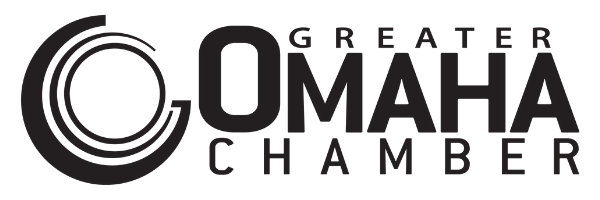Economic-performance data compares Omaha & 9 Metros, including Austin,
Salt Lake City, Nashville, Colorado Springs and more
OMAHA, Neb, May 16, 2018 — The “2018 Barometer,” which compares the economic performance and characteristics of the Omaha – Council Bluffs – Fremont metro with nine other metros to reveal strengths and opportunities for growth, was released today by the Greater Omaha Chamber.
One of the region’s most comprehensive, comparative analyses, the report uses multiple indexes to evaluate Omaha’s competitiveness against other high-performing metros. It is completed in collaboration with the University of Nebraska-Lincoln.
“Each year we compare the economic performance and characteristics of our region. In 2018, we ranked No. 5 out of the 10 metros, maintaining our ranking for the fifth year in a row,” said David G. Brown, president and CEO, Greater Omaha Chamber. “This does not mean our progress has stagnated – in fact, we’ve bested our overall score by three percent and are now 10 percent higher (of the eight indexes combined for this report) than the national average. Measuring also allows us to critically examine areas for potential improvement and actively make data-informed decisions that catalyze change.”
The report includes comparatives for Omaha’s “peers” (Salt Lake City, UT; Louisville, KY Colorado Springs, CO), “competitors” (Des Moines, IA; Kansas City, MO-KS; Oklahoma City, OK) and “aspirational cities” (Austin, TX; Raleigh, NC; Nashville, TN).
“One unexpected finding in the 2018 Barometer report was a sharp 13.6 percent increase in wages per job in the Omaha Metropolitan Area between 2014 and 2107,” said Dr. Eric Thompson lead researcher and director, Bureau of Business Research College of Business Administration University of Nebraska-Lincoln.
“These sharp increases are encouraging, given ongoing efforts in Omaha to raise wages by educating and training workers for information technology and other higher wage occupations,” Thompson added.
Key data showed:
- Entrepreneurs in Omaha earn twice as much as the US average
- High quality of life – with abundant arts and cultural opportunities (No. 2), quick commute times (No. 2) and accessible health care (No. 1)
- Innovation is consistently rising in Greater Omaha – with five-percent growth since 2014, trending to surpass Nashville’s rating
- Business costs are low, with Omaha ranking second only to Louisville, KY
“The annual Barometer report provides a measuring stick to see how Greater Omaha compares against flourishing metros that either exhibit growth patterns we aspire to, or have similar characteristics to ours,” said Jennifer Zarek, the Greater Omaha Chamber’s research analyst who oversees the annual Barometer.
Zarek added the 2018 Barometer, for the first time, shows trends over time. “We can look at our progress over the last five years to see where we have prospered and identify potential development opportunities to pursue,” she said.
Paula Hazlewood, executive director, Advance Southwest Iowa Corporation, said regional growth is a result of “persistence paying off.” She added that for Council Bluffs, IA and Pottawattamie County, new buildings and housing units are “going vertical” on the Missouri riverfront and expansions are occurring throughout region. I fully anticipate that momentum continuing.”
Garry Clark, executive director, Greater Fremont Development Council, echoed Hazlewood’s remarks regarding “momentum continuing.” He noted planning in Fremont, NE and Dodge County includes, “a Micro-loan and grant program designed to support small business, as well as a real estate task force created to examine ways to build up our inventory of available sites for attraction and expansion opportunities.”
Overall, the Barometer revealed Omaha-Council Bluffs-Fremont’s economic growth continues to be about 22 percent above the U.S. average. Other characteristics, such as high educational attainment, low business costs and abundant amenities, give Omaha a strong advantage in entrepreneurship, business climate and quality of life.
View the full report here: 2018 Barometer
About Greater Omaha
Omaha is a No. 1 ranked up-and-coming-tech hotspot and Time magazine’s 2017 No. 3 Most Up-and-Coming City in America. Recognized for its “We don’t coast” attitude, Greater Omaha is home to more than 30 communities and nearly 1 million people, with a youthful population (more than 40 percent are age 24 or younger), low cost of living and steady economic growth that outpaces the nation. Berkshire Hathaway, Mutual of Omaha, Peter Kiewit Sons’ Inc. and Union Pacific – all Fortune 500 companies – call Greater Omaha “home.”
About the Greater Omaha Chamber
The mission of the Greater Omaha Chamber is to champion a thriving business community and prosperous region through visionary leadership and collaboration.
